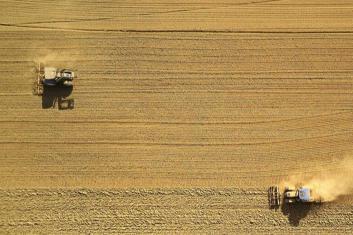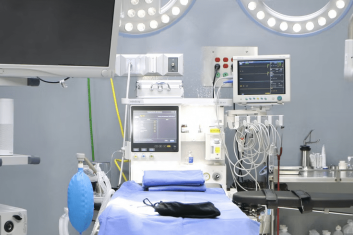Researchers have proven many times that implementing IoT solutions offers huge benefits for businesses. In this article, we’ll look at five companies that have used IoT to cut costs, improve customer satisfaction, and address quality issues.
Amazon Enhances Warehousing and Shopping
Amazon is an online store behemoth, which sells almost everything you can think of, operating 75 fulfillment centers and 25 sorting centers in North America.
The fulfillment centers are where goods are packaged and sent to customers. Amazon has about 125,000 full-time employees working in those centers.
Working in a warehouse is not particularly easy or safe. So in 2014, Amazon deployed machines built by Kiva — robots used to move packages so that workers don’t have to perform dangerous tasks. The location of packages is also tracked for ease of access.
In 2016, Amazon claimed that implementing IoT devices helped cut packaging cycle times from 60 to 15 minutes and grow inventory space by 50%, thanks to smart facility management. The company managed to cut operating costs by 20%, saving $22 million per each of the 13 facilities where the robots are utilized.
Though operating mostly online, Amazon does own a couple of offline grocery stores: Whole Foods and Amazon GO, and the latter is particularly interesting.
Amazon Go was one of the first stores in the US with no cashiers. Here’s how it works:
- Shoppers walk into the store.
- Using the Amazon Go app, shoppers choose the products they want, scanning the code for each product.
- Each item is added to their virtual Amazon Go cart.
- If a customer decides against keeping an item and puts it back, it’s removed from the cart.
- As shoppers leave the store, the Amazon Go app totals the charge through each customer’s phone.
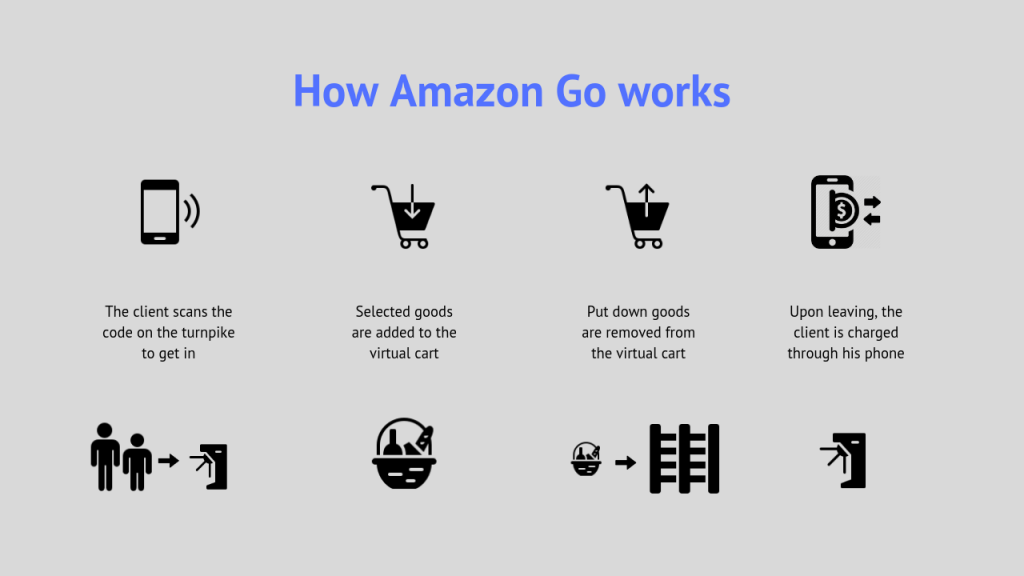
Amazon Go operates in the cloud, so you won’t waste any time. Get in, take what you want, and get going.
To make the cashier-less store work, Amazon uses IoT technology such as computer vision, deep learning, and sensor vision. The people who work at Amazon Go are there only to prepare food, help customers make purchases, and look after the store.
With cashier-less stores, customers save time because they don’t have to wait in checkout lines. Also, the system offers the company the opportunity to collect lots of data that will help in improving the shopping experience even more.
Rolls Royce Improves Engine Quality
Rolls Royce is known for luxury vehicles, but the company also makes aircraft engines, such as the Trent engine used in the Boeing 787 Dreamliner.
The aircraft industry can’t boast of large margins, so airlines are always on the lookout for ways to cut operating costs.
This is where Roll Royce steps on the path of IoT development. The company has started hooking up their engines with connected devices for predictive maintenance and optimization.
Their latest engines come with 25 IoT sensors that track fuel flow, pressure, and temperature. On top of that, the company provides technology to track the aircraft’s altitude, speed, and air temperature, as well as ways to analyze the data to figure out maintenance patterns and better routing.
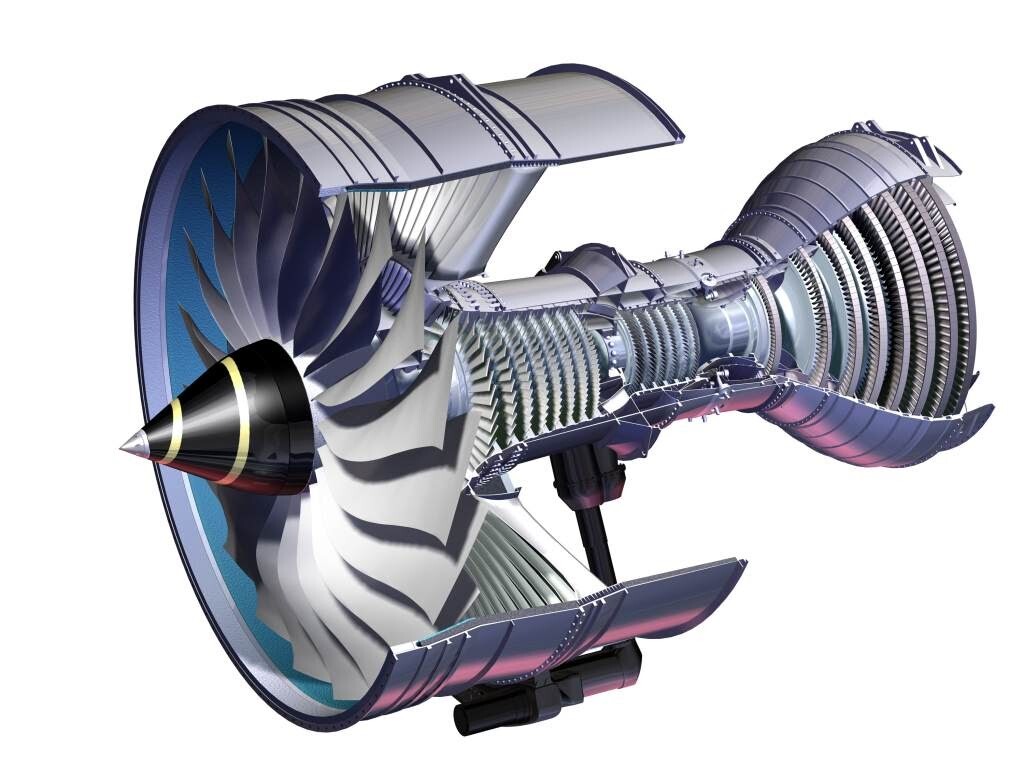
Rolls Royce Trent Engines are set to reduce fuel consumption.
Dmitry Sokolovski
Project Manager
at HQSoftwareHere goes one more example of IoT technology helping businesses upgrade their workflows. To help an agricultural company optimize the process of planting crops, we have built an IoT solution that allowed detailed soil analysis. Sensors, controlled by Raspberry Pi, track such soil parameters as texture, structure, acid level — 35 in total. A native android application presented the data in the form of the automated reports, as well as visualized reports on the map in real-time.
Fitness First Pushes Personalized Content
Fitness First is investing in IoT devices to reinvent the way the business communicates with the customers.
The company is striving to redefine how people use gyms nowadays. The old model was a monthly gym subscription, which provides no flexibility for clients. If you stop attending the gym, the company keeps the money and you can’t do anything about it.
Fitness First is trying an “on-demand” approach to the subscription model, using the customer’s smartphone as a key card that can be used to pay for each workout at the gym separately. The payment is made through the Fitness First app, which also provides additional health-related content.
This way, customers can attend the facility as much or as little as they want, without being afraid they’ll lose prepaid workouts.
Beacons are used to push personalized content to the clients’ phones as well. If the person comes to the gym regularly, the beacon can send him or her a notification offering to invite his or her friends.
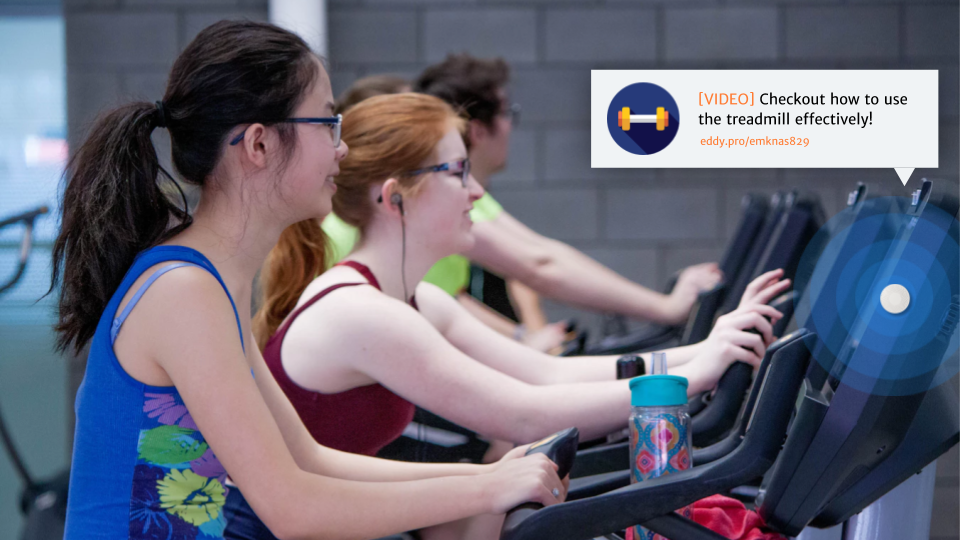
Beacons provide personalized contextual information to gym visitors.
Ups Tackles Its Environmental Impact
UPS has also adopted IoT solutions to optimize the way the company works. Technology is used to gather analytics from every aspect of the business.
Technology is applied to analyze routes and track packages to serve customers better. Also, Predictive Maintenance sensors monitor the condition of the vehicles at all times to find defects and potential breaks.
Enhanced routing reduces fuel use and emissions, which is good for both the company’s workflow and the environment. Using that approach, UPS claims to be saving more than $400 million a year.
The company not only tries to optimize workflow by eliminating potential issues but uses prescriptive analytics to figure out its strategy. UPS is utilizing technology in ways that can generate autonomous decisions and solutions.
Want to build an IoT solution?
We are ready to use our expertise to power up your business.
Aleksandra Golik
Head of Sales
at HQSoftware
Walt Disney World Brings Some Magic
Disney is using connected devices to improve the experience with as little staff interaction as possible. It is making use of beacons and other Internet of Things tech to track visitors to Disney World.
Two main components of the Disney IoT experience are the Disney World app and the MagicBand.
Before arriving at the theme park, users are invited to sign-in on the app and go through an onboarding process where they’re asked to choose some favorite Disney activities. Using that info, the application can suggest activities to users while they’re visiting the park and offer directions.
The location of the user is tracked using beacons scattered throughout the park and the MagicBand on his or her wrist. This all-in-one device is sent to guests when they buy tickets in advance, order an annual pass or book a reservation at a Disney hotel. By touching the band to a sensor, the user can enter a hotel room, be admitted to the park, or pay for purchases.
To illustrate how it works, we will review the process of eating at a Disney restaurant. Guests can make a reservation through the app, and have a table ready for them when they arrive.
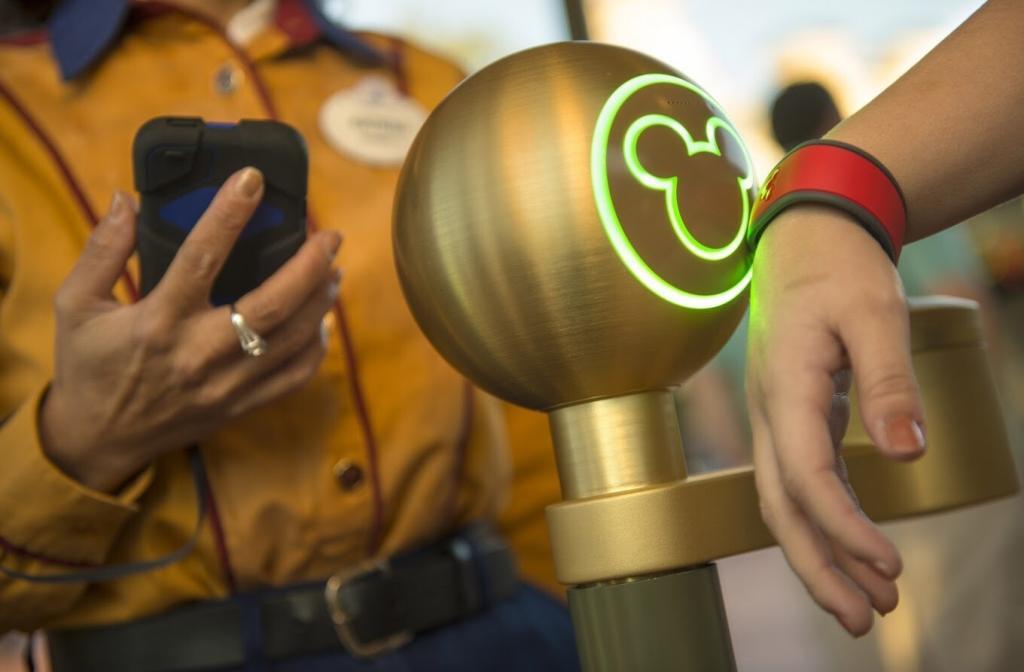
MagicBand can be used to get on the rides, unlock hotel rooms doors, and much more.
As the customer approaches the restaurant, wearing a MagicBand traced by the beacons, the restaurant workers are notified of the party’s imminent arrival and can start preparing the customer’s order. Guests have only a short wait before the meal is served.
Using MagicBand, Disney World visitors can do everything that requires tickets or documents. When they board the Magic Express train to the park, the visitors won’t be asked for tickets — they just need to scan their MagicBands on the terminal.
The location of visitors is tracked to ensure a seamless experience at Disney World. For instance, guests don’t have to worry about their luggage during their visit: the system will find their hotel room and deliver the luggage there.
Internet of Things Ups Your Business Workflow
Many companies who have started IoT projects quickly see the benefits. They transform the way they conduct business and redefine the customer experience.
Among the benefits extracted from the Internet of Things are improved customer satisfaction, fuel and cost savings, minimized equipment downtime, and decreased environmental impact.

Founder
Hey! Welcome to our blog!
The topics we cover include IoT, AR/VR, related news, and our projects.If you’d
like to discuss an article, please
messsage
me on LinkedIn
Related Posts
View All
We are open to seeing your business needs and determining the best solution. Complete this form, and receive a free personalized proposal from your dedicated manager.

Sergei Vardomatski
Founder



